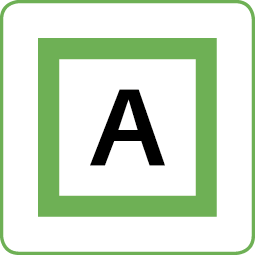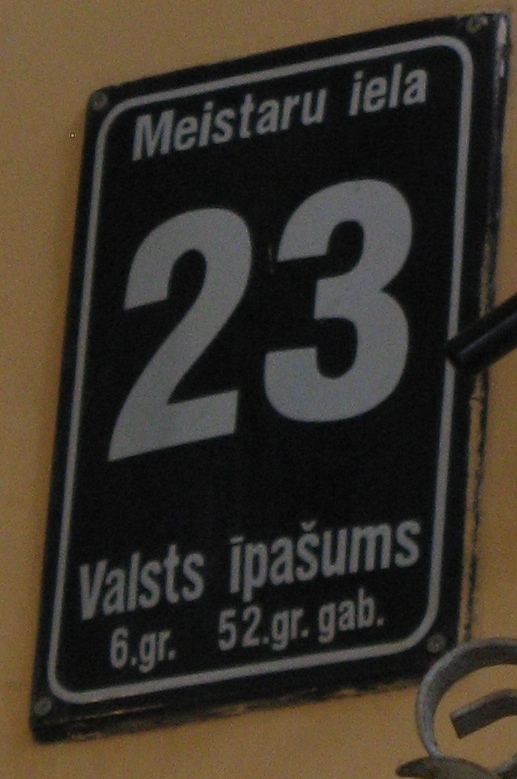|
Norwegian Audit Bureau Of Circulations
The Norwegian Audit Bureau of Circulations ( no, Norsk Opplagskontroll AS) is a company that monitors the print runs of Norwegian newspapers, magazines, and weekly publications, and offers advice on calculating circulation numbers. It was established in 2001 and is owned by: * The Norwegian Media Businesses' Association (MBL), which represents the country's largest newspapers and a number of magazines and magazines. The organization includes about 128 newspapers and 75 magazines; * The National Association of Local Newspapers (LLA), which has about 110 small newspapers as members; and * The Norwegian Media Authority, which manages about NOK 300 million in press subsidies. The three partners each have a one-third stake in the company and act as the contracting authority for the company. The three owners also prepare the regulations used to carry out the monitoring. In practice, the publications submit circulation figures through their organizations. The Norwegian Audit Bureau of C ... [...More Info...] [...Related Items...] OR: [Wikipedia] [Google] [Baidu] |
Norwegian Media Businesses' Association
The Norwegian Media Businesses' Association ( no, Mediebedriftenes Landsforening, MBL) is an employers' organisation in Norway, organized under the national Confederation of Norwegian Enterprise. The current CEO is Arvid Sand. Chairman of the board is Ivar Rusdal Ivar (Old Norse ''Ívarr'') is a Scandinavian masculine given name. Another variant of the name is Iver, which is more common in Norway. The Old Norse name has several possible etymologies. In North Germanic phonology, several of the elements c .... References External linksOfficial site Employers' organisations in Norway {{Norway-org-stub ... [...More Info...] [...Related Items...] OR: [Wikipedia] [Google] [Baidu] |
National Association Of Local Newspapers
The National Association of Local Newspapers ( no, Landslaget for lokalaviser, LLA) is a Norwegian association for local newspapers. The organization was established in Voss in 1976, and it works for its member companies' general conditions and interests. Among the first issues it dealt with was inclusion of the smallest local newspapers in the direct press support system, which occurred in 1989. The association is now a co-owner of the Norwegian Audit Bureau of Circulations, the company responsible for monitoring newspapers' circulation figures. These figures are the basis for receiving press subsidies. The association also represents its member companies in various government agencies and committees. The National Association of Local Newspapers is not a tariff organization, and therefore does not negotiate on behalf of its member companies. Some of the association's members are also members of the Norwegian Media Businesses' Association (MBL). The National Association of Loca ... [...More Info...] [...Related Items...] OR: [Wikipedia] [Google] [Baidu] |
Norwegian Media Authority
The Norwegian Media Authority ( no, Medietilsynet) is a Norwegian government agency subordinate to the Ministry of Culture and Equality charged with various tasks relating to broadcasting, newspapers and films. It enforces rules on content, advertising and sponsorship for broadcast media, rates movies, administers newspaper production grants and enforces rules on media ownership. Activities The authority's tasks include * rating movies * enforcing rules on content, advertising and sponsorship for broadcast media; handling license applications for local broadcast media * handling applications for newspaper production grants for non-leading newspapers, minority language newspapers and Sami newspapers * overseeing and intervening against the acquisition of media ownership (either prohibiting the acquisition or merger, or allowing an acquisition on such conditions as the Authority sets, including ordering the divestment of other media ownership interests. History The agenc ... [...More Info...] [...Related Items...] OR: [Wikipedia] [Google] [Baidu] |
Norwegian Krone
The krone (, abbreviation: kr (also NKr for distinction); code: NOK), plural ''kroner'', is currency of the Kingdom of Norway (including Svalbard). Traditionally known as the Norwegian crown in English. It is nominally subdivided into 100 ''øre'', although the last coins denominated in øre were withdrawn in 2012. The krone was the thirteenth-most-traded currency in the world by value in April 2010, down three positions from 2007. The Norwegian krone is also informally accepted in many shops in Sweden and Finland that are close to the Norwegian border, and also in some shops in the Danish ferry ports of Hirtshals and Frederikshavn. Norwegians spent 14.1 billion NOK on border shopping in 2015 compared to 10.5 billion NOK spent in 2010. Border shopping is a fairly common practice amongst Norwegians, though it is seldom done on impulse. Money is spent mainly on food articles, alcohol, and tobacco, in that order, usually in bulk or large quantities. This is due to considerably ... [...More Info...] [...Related Items...] OR: [Wikipedia] [Google] [Baidu] |
Porsgrunn
is a city and municipality in Telemark in the county of Vestfold og Telemark in Norway. It is part of the traditional region of Grenland. The administrative centre of the municipality is the city of Porsgrunn. The municipality of Porsgrunn was established on 1 January 1838 (see formannskapsdistrikt). The town of Brevik and the rural district of Eidanger were merged into the municipality of Porsgrunn on 1 January 1964. The conurbation of Porsgrunn and Skien is considered by Statistics Norway to be the seventh-largest city in Norway. General information Name The place is first mentioned in 1576 (''"Porsgrund"'') by the writer Peder Claussøn Friis in his work ''Concerning the Kingdom of Norway'' (see the article: Norwegian literature). He writes: "Two and a half miles from the sea, the Skien river flows into the fjord, and that place is called Porsgrund." The name was probably given during medieval times to the then swampy area by the nuns of Gimsøy Abbey, who went here to c ... [...More Info...] [...Related Items...] OR: [Wikipedia] [Google] [Baidu] |
International Federation Of Audit Bureaux Of Circulations
The International Federation of Audit Bureaux of Circulations (IFABC) is an organisation founded in 1963 in Stockholm, Sweden. IFABC is ''a voluntary cooperative federation of industry-sponsored organizations established in nations throughout the world to verify and report facts about the circulations of publications and related data.'' (IFABC website) A General Assembly of members is held every second year since 1963. Assemblies have been held in New York City, Paris, Munich, Copenhagen, London, Chicago, Madrid, Rio de Janeiro, Stockholm, Tokyo, Toronto, Buenos Aires, Lucerne, New Delhi, Berlin, Washington, D.C., Seville, Sydney, and Kuala Lumpur. The aim of the IFABC is to work with national and international organisations that constructively support the goals and work of its members. The Federation facilitates the exchange of experience and best practice between member organisations. Members organisations are committed to working towards a common goal of supporting transpare ... [...More Info...] [...Related Items...] OR: [Wikipedia] [Google] [Baidu] |
Mass Media Companies Of Norway
Mass is an intrinsic property of a body. It was traditionally believed to be related to the quantity of matter in a physical body, until the discovery of the atom and particle physics. It was found that different atoms and different elementary particles, theoretically with the same amount of matter, have nonetheless different masses. Mass in modern physics has multiple definitions which are conceptually distinct, but physically equivalent. Mass can be experimentally defined as a measure of the body's inertia, meaning the resistance to acceleration (change of velocity) when a net force is applied. The object's mass also determines the strength of its gravitational attraction to other bodies. The SI base unit of mass is the kilogram (kg). In physics, mass is not the same as weight, even though mass is often determined by measuring the object's weight using a spring scale, rather than balance scale comparing it directly with known masses. An object on the Moon w ... [...More Info...] [...Related Items...] OR: [Wikipedia] [Google] [Baidu] |
Government-owned Companies Of Norway
State ownership, also called government ownership and public ownership, is the ownership of an industry, asset, or enterprise by the state or a public body representing a community, as opposed to an individual or private party. Public ownership specifically refers to industries selling goods and services to consumers and differs from public goods and government services financed out of a government's general budget. Public ownership can take place at the national, regional, local, or municipal levels of government; or can refer to non-governmental public ownership vested in autonomous public enterprises. Public ownership is one of the three major forms of property ownership, differentiated from private, collective/cooperative, and common ownership. In market-based economies, state-owned assets are often managed and operated as joint-stock corporations with a government owning all or a controlling stake of the company's shares. This form is often referred to as a state-owne ... [...More Info...] [...Related Items...] OR: [Wikipedia] [Google] [Baidu] |
2001 Establishments In Norway
1 (one, unit, unity) is a number representing a single or the only entity. 1 is also a numerical digit and represents a single unit of counting or measurement. For example, a line segment of ''unit length'' is a line segment of length 1. In conventions of sign where zero is considered neither positive nor negative, 1 is the first and smallest positive integer. It is also sometimes considered the first of the infinite sequence of natural numbers, followed by 2, although by other definitions 1 is the second natural number, following 0. The fundamental mathematical property of 1 is to be a multiplicative identity, meaning that any number multiplied by 1 equals the same number. Most if not all properties of 1 can be deduced from this. In advanced mathematics, a multiplicative identity is often denoted 1, even if it is not a number. 1 is by convention not considered a prime number; this was not universally accepted until the mid-20th century. Additionally, 1 is the s ... [...More Info...] [...Related Items...] OR: [Wikipedia] [Google] [Baidu] |




